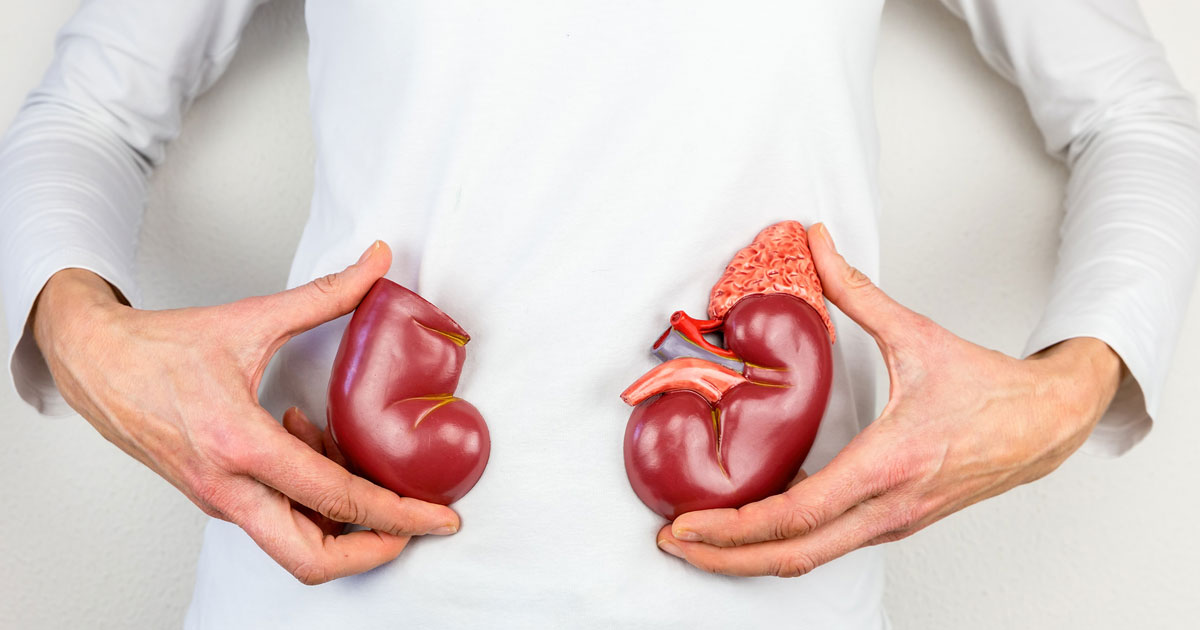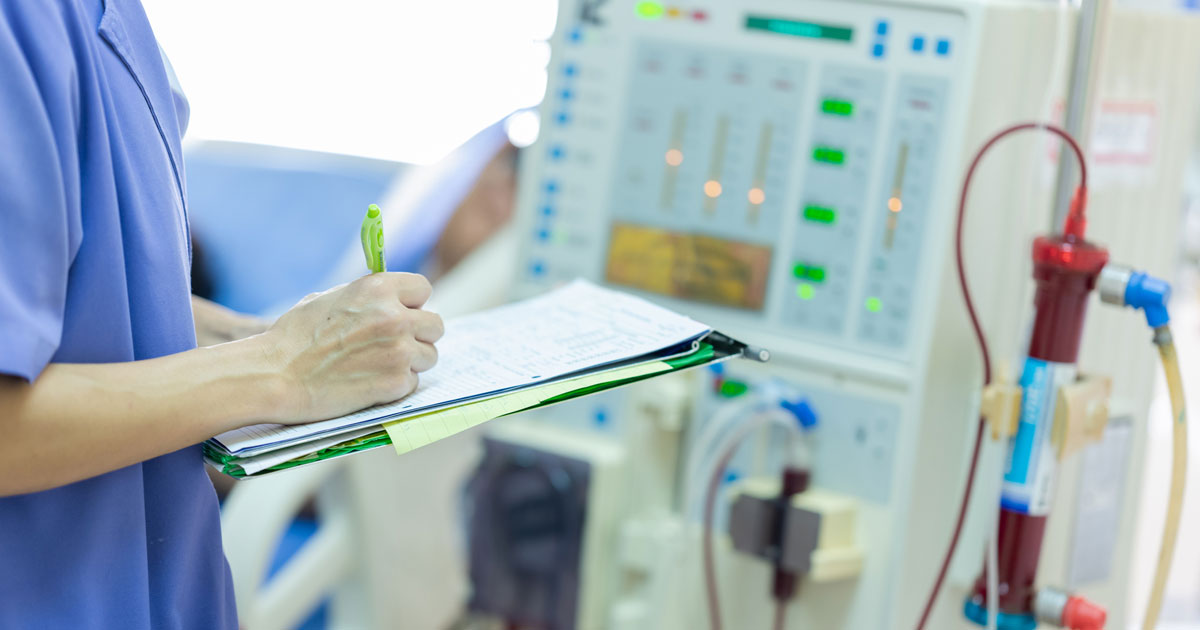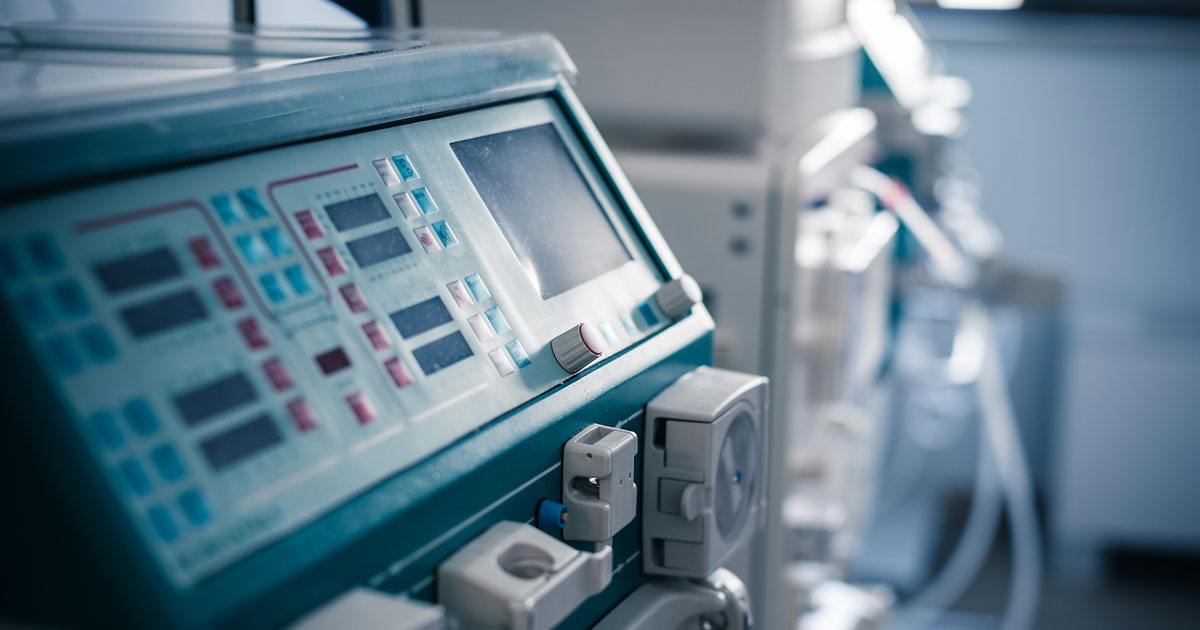
Chronic kidney disease (CKD), also referred to as chronic renal failure, is a condition in which the patient’s renal function declines until the kidneys are no longer able to perform their function. According to CDC estimates from 2021, approximately 37 million adults in the United States have CKD. As with several other conditions, senior patients are more susceptible to renal disease.
An estimated 38% of patients with chronic renal failure are age 65 and over. The early stages of chronic kidney disease do not always result in visible symptoms, so it can often go undiagnosed or unnoticed for extended periods of time. While kidney damage is unfortunately irreversible, there are ways to manage symptoms and slow disease progression with the right nursing care plan.
Risk Factors and Causes of Chronic Renal Failure
Chronic kidney disease can develop for a variety of reasons, and some are at greater risk of disease impacting their kidney function.
Risk Factors for Renal Failure
In addition to those over the age of 65, some risk factors give people a higher likelihood of kidney disease. Some races are more susceptible, in this case those of African American, Asian American, and Native American descent at higher risk. Smoking is another risk factor, as the damage to the vascular system can impact a patient’s renal function as well.
Other common risk factors are obesity, family history of kidney disease, congenital abnormalities and deformities, and having certain autoimmune diseases.
Common Causes of Kidney Disease
Of the several conditions that can lead to kidney damage, those most likely to impact renal function are diabetes, hypertension (high blood pressure), and glomerulonephritis. Type 1 and Type 2 diabetes can impact the kidneys by damaging the renal blood vessels, and it is the most common cause of CKD. Similarly, high blood pressure can also lead to vascular issues in the renal blood vessels, damaging the kidneys ability to filter blood properly. These two conditions alone account for nearly three quarters of chronic renal failure cases.
Glomerulonephritis, a condition in which glomeruli (small filters within the kidneys) become inflamed, also leading to kidney damage. Other common causes are urinary tract obstructions such as kidney stones and urinary tract infections. Cardiovascular disease, polycystic kidney disease, interstitial nephritis, pyelonephritis, and other diseases can also lead to chronic renal failure.

Diagnosing Chronic Kidney Disease
Keeping an eye out for risk factors and causes can be crucial in the timely treatment and management of CKD, as the early stages of disease can be entirely asymptomatic. By the time specific noticeable symptoms appear, up to as much as 90% of the patient’s kidney function could be irreversibly damaged.
To diagnose renal failure, a healthcare professional will take the medical history of the patient and complete a physical examination. After an initial examination, there are several tests a doctor may prescribe in the nursing diagnosis of renal failure.
Blood tests can check for specific markers and estimate the patient’s glomerular filtration rate to determine current kidney function. Testing urine can similarly reveal the state of a patient’s kidneys. If needed, a doctor may perform a kidney biopsy to collect tissue for testing, which can often provide much more information about any problems. CT scanning may also reveal any abnormalities in the size or structure of the kidney.
Stages of Kidney Disease
Chronic kidney disease is measured in five stages which are determined by the patient’s glomerular filtration rate (GFR), a measurement for the milliliters of blood filtered by the kidneys per minute. The lower a patient’s GFR, the worse their stage of kidney disease is.
Stage 1
During the first stage of kidney failure, the kidney is still functioning at a healthy GFR of ≥ 90 mL/minute. Most patients in stage 1 of CKD will not have noticeable symptoms.
Stage 2
The second stage of kidney disease involves a mild loss of kidney function, marked by a GFR of 60 to 89 mL/minute. At this stage, it is also unlikely for individuals to notice symptoms specifically attributable to renal failure.
Stage 3
By the third stage of renal disease, the kidneys could suffer anywhere from mild to severe damage, leading to a GFR of 30 to 59 mL/minute. At this point, patients are more likely to exhibit visible symptoms that point to chronic kidney disease.
Stage 4
At this stage of the disease, the kidneys have experienced a severe decline in function, leaving the patient’s GFR at a staggering 15 to 29 mL/minute. By the fourth stage, the patient is likely to be noticing significant symptoms.
Stage 5
The fifth and final stage, which is what is referred to as end-stage renal disease, is the point at which a patient’s kidneys are at near or total failure. In this case, the patient’s GFR would be less than 15 mL/minute.
Symptoms
While symptoms will not usually become noticeable until the later stages of kidney disease, it is still important to keep an eye out for the signs of CKD so that it can be diagnosed as early as possible. Some of the symptoms attributed to chronic renal disease are:
- Nausea and/or vomiting
- Decrease or loss of appetite
- Significant fluid retention or total stop of urine output (oliguria and anuria)
- Mental fogginess
- Trouble sleeping
- Fatigue
- Increase in muscle cramping and twitching
- Consistent itching
- Swelling of the ankles
- Fluid buildup leading to shortness of breath and chest pain
- High blood pressure (hypertension)
If you notice one or more of these symptoms occurring, it is advisable to seek a nursing diagnosis for the senior in your care.
Treating Chronic Kidney Disease
Chronic renal failure is irreversible and incurable, but there are several treatment options available to manage symptoms, slow disease progression, and improve patient quality of life. If proper treatment is not received, the damage to the patient’s kidney can lead to end-stage renal disease, at which point only dialysis and kidney transplant can potentially help.

Dialysis
If CKD is not caught early enough or if medications and care plans have not stopped the disease from progressing to end-stage, dialysis may be one of the only options available to a patient. Dialysis works by filtering blood and removing waste products and extra fluids in the same way that healthy kidneys would.
One version of this treatment, peritoneal dialysis, can be done at home, and involves flushing fluid in and out of the blood vessels of the abdominal lining to make up for the lack of filtration by the kidneys. Another option, hemodialysis, filters the blood directly. The process involves drawing the patient’s blood into a special filter to remove waste, then returning the filtered blood to the patient’s body. This can also be done at home in some cases but may require going to a dialysis center.
Kidney Transplant
Since dialysis has to be continued permanently, kidney transplant is often the preferred treatment method when possible. While any transplant carries inherent risks to the autoimmune system and potentially organ rejection, a replacement kidney will filter the patient’s blood and remove the need for dialysis.
In addition to the health risks, there are other complications that can arise when pursuing an organ transplant. The greatest hurdle in this case is finding a donor. It often takes time to find a donor organ that is a suitable match for the patient, and the patient will likely need to continue with dialysis for an extended period until they can receive a donated kidney.
If a donor organ is found in time, the patient will need to undergo surgery to place the kidney and attach the surrounding blood vessels and organs. As this is a major surgery, patients will need to stay in the hospital for up to a week for observation, and will likely need to take anti-rejection medications for the remainder of their lives.
Palliative care
As both dialysis and kidney transplant come with a plethora of complications and pain points, a patient may opt for supportive or palliative care. Without additional treatment, end-stage renal disease will result in total loss of kidney functions, and eventually death. This can occur rapidly, or in some cases take years.
Palliative care involves treating symptoms directly and reducing pain. In the case of end-stage renal disease, this can involve medications for pain, nausea, and appetite loss to make patient’s more comfortable as their renal failure progresses.
However the patient decides to proceed in caring for their end-stage renal disease, proper care plans can help improve the patient’s quality of life and overall comfort. Care plans should include the monitoring of a patient’s condition to keep an eye on their kidney function, administration of medications, and the implementation of changes to diet, exercise, and lifestyle to resist the continued deterioration of kidney functions.
Keystone Health provides chronic care management and palliative care options for senior patients in Idaho. For more information on how Keystone can help you or those in your care, click here to learn more about the services available.
